Abstract
Fixed-interval schedule performance is characterized by high levels of variability. Responding is absent at the onset of the interval and gradually increases in frequency until reinforcer delivery. Measures of behavior also vary drastically and unpredictably between successive intervals. Recent advances in the study of nonlinear dynamics have allowed researchers to study irregular and unpredictable behavior in a number of fields. This paper reviews several concepts and techniques from nonlinear dynamics and examines their utility in predicting the behavior of pigeons responding to a fixed-interval schedule of reinforcement. The analysis provided fairly accurate a priori accounts of response rates, accounting for 92.8% of the variance when predicting response rate 1 second in the future and 64% of the variance when predicting response rates for each second over the entire next interreinforcer interval. The nonlinear dynamics account suggests that even the “noisiest” behavior might be the product of purely deterministic mechanisms.
Keywords: nonlinear dynamics, fixed-interval schedule, response variability, predictability, behavioral dynamics, key peck, pigeons
Full text
PDF
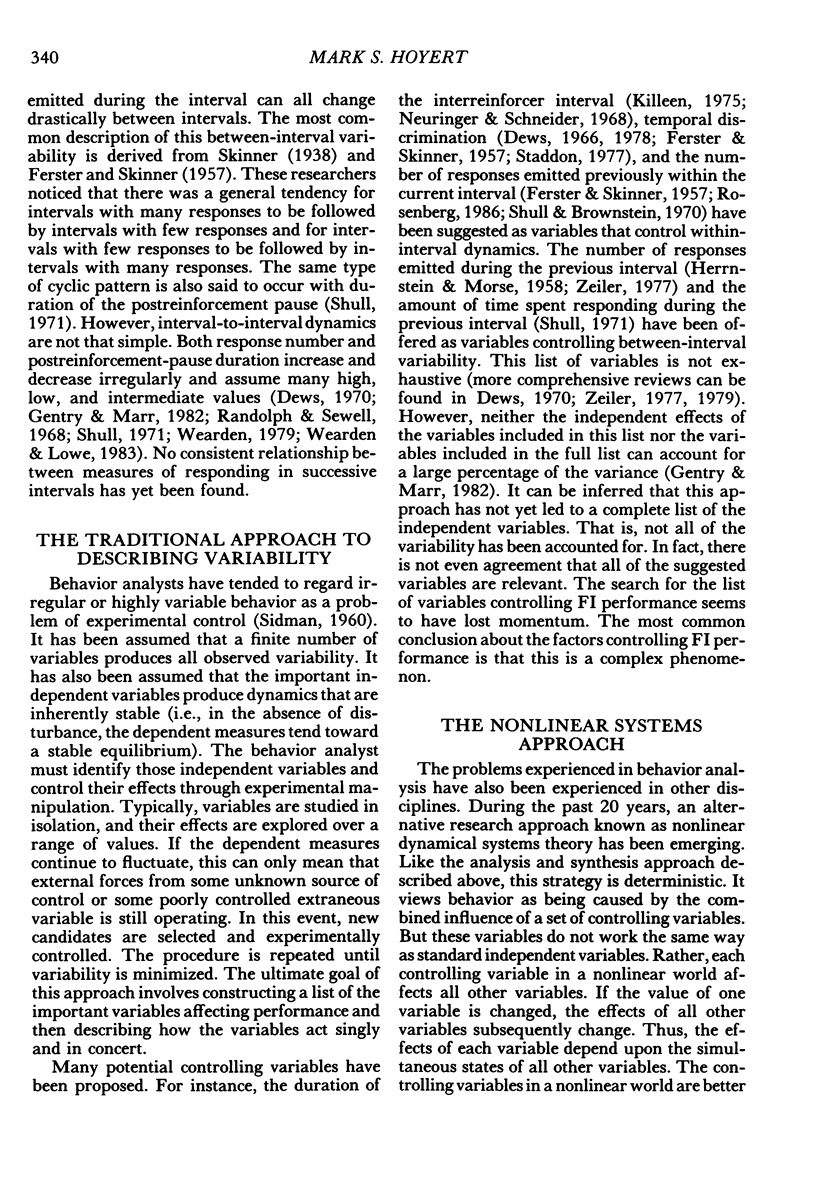
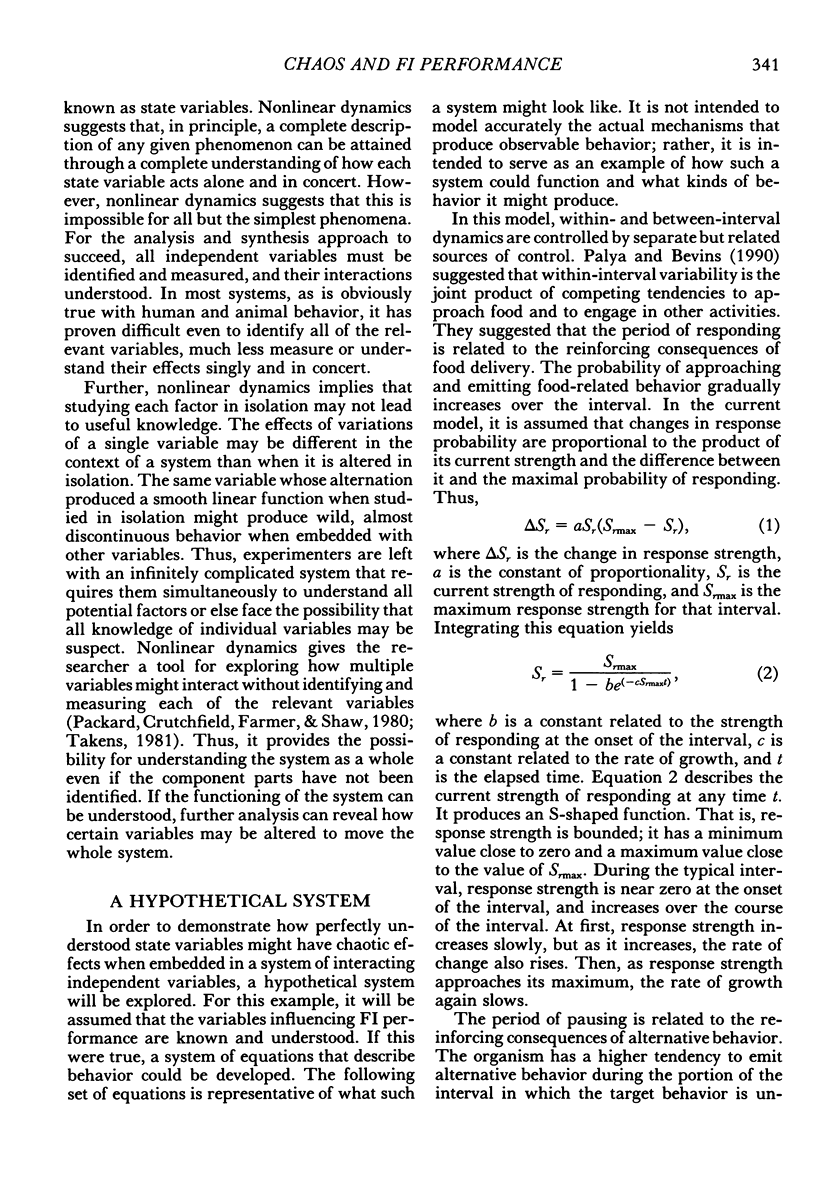
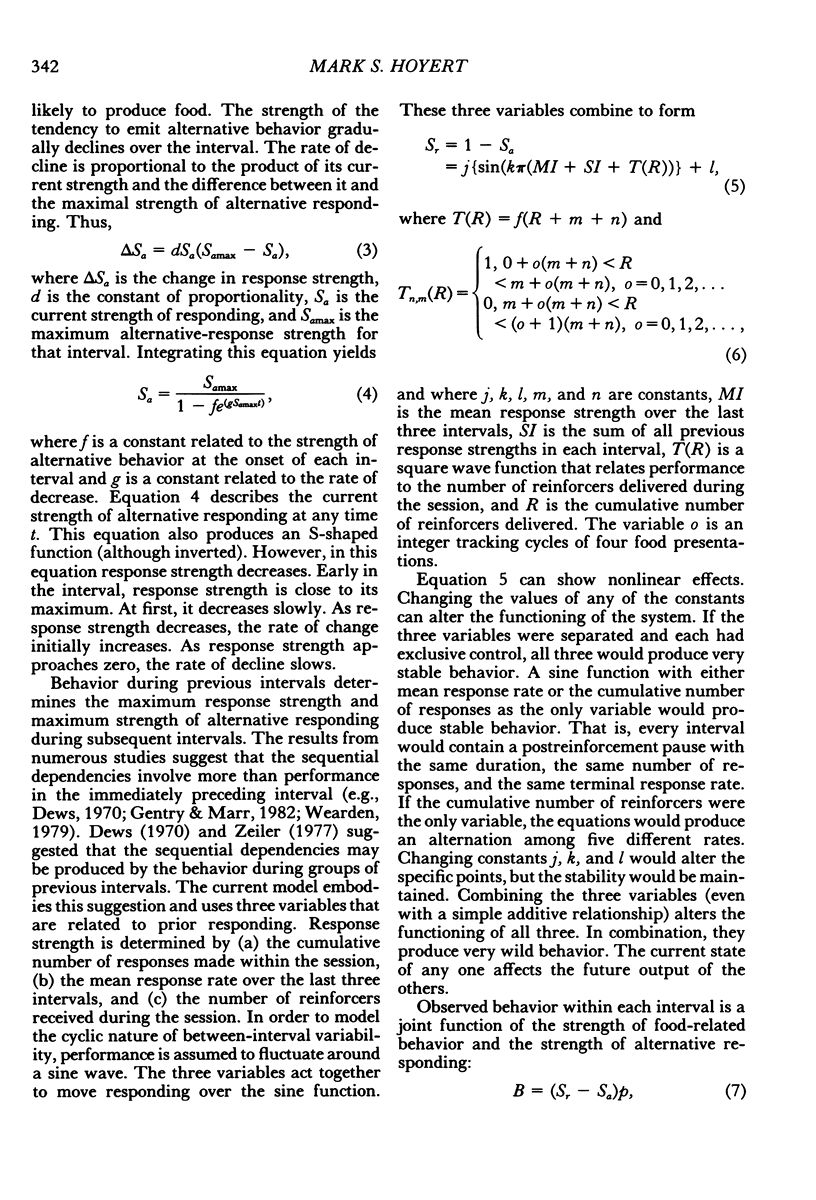
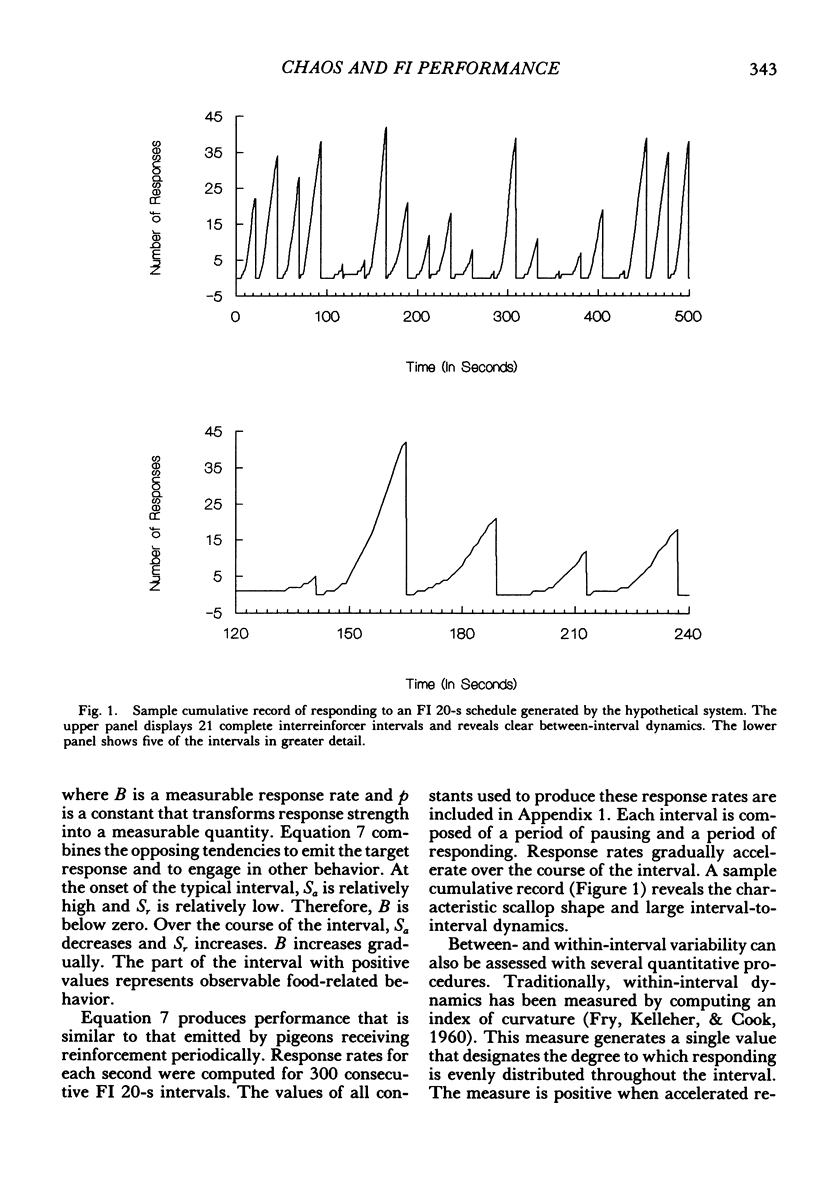
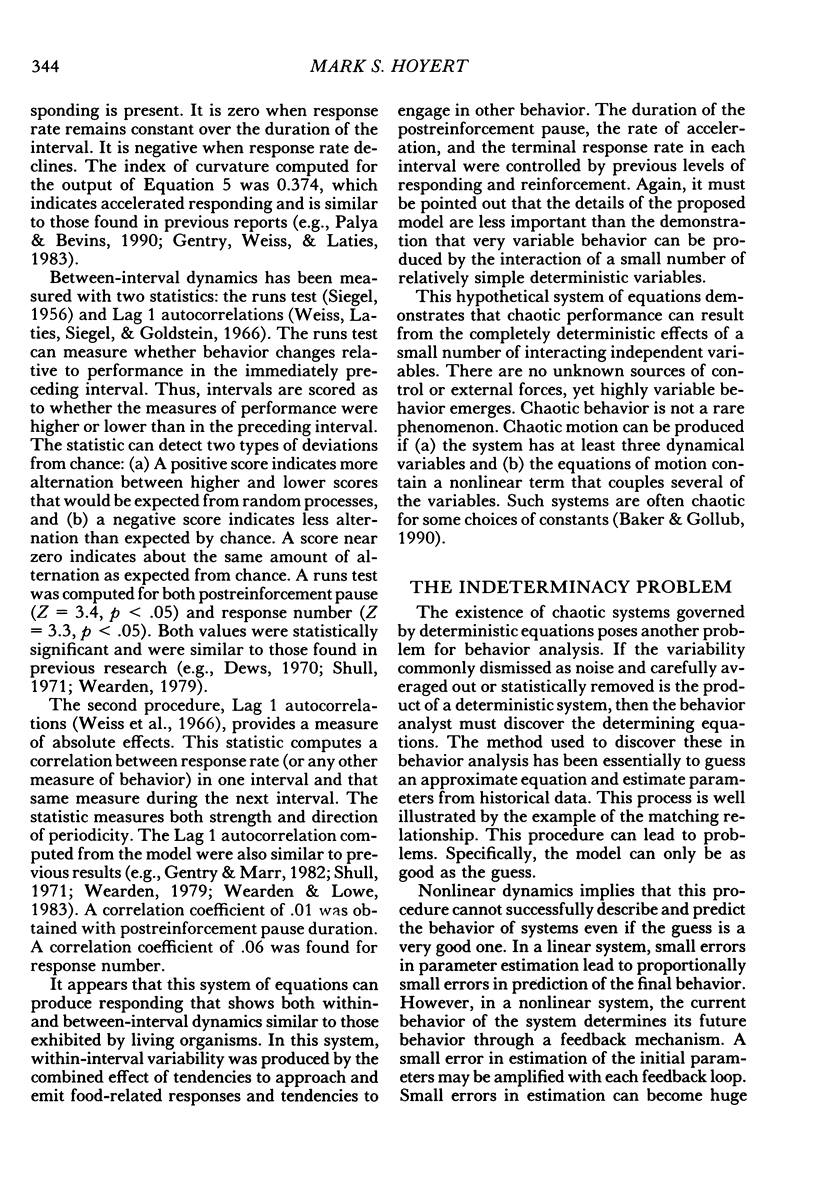
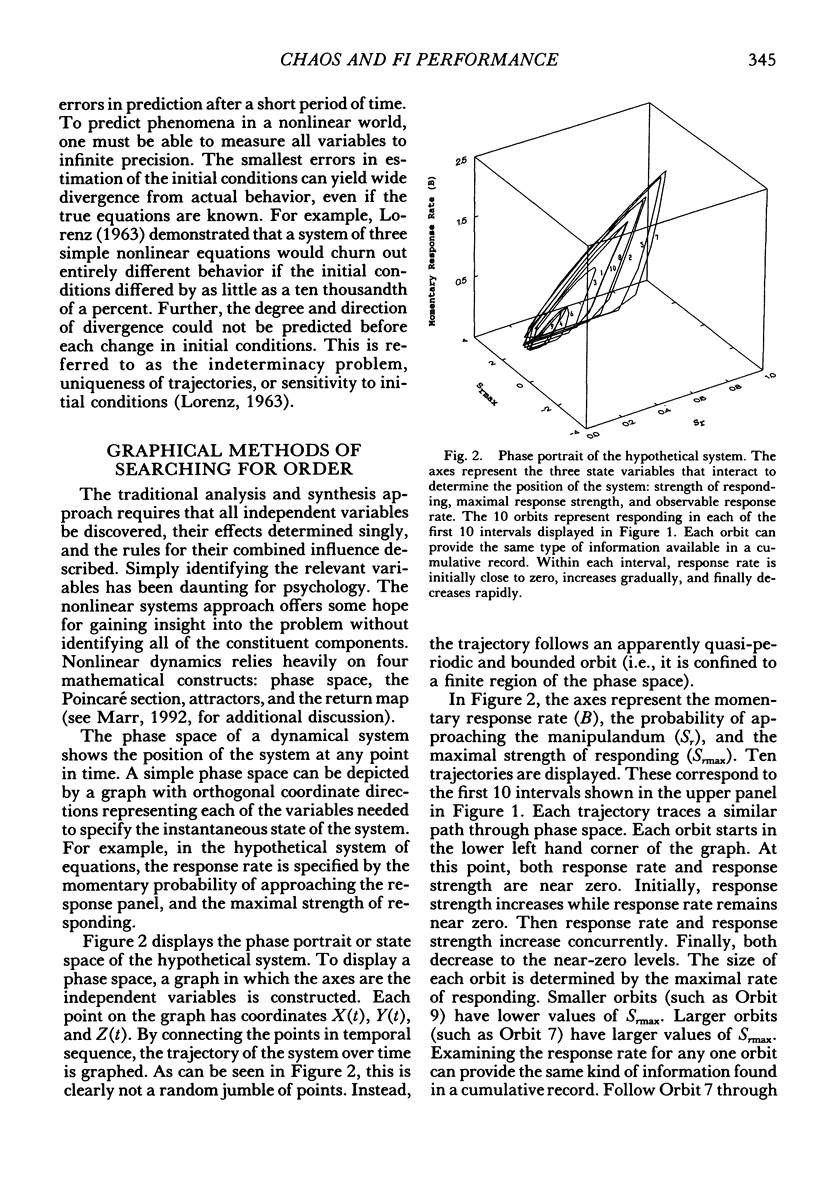
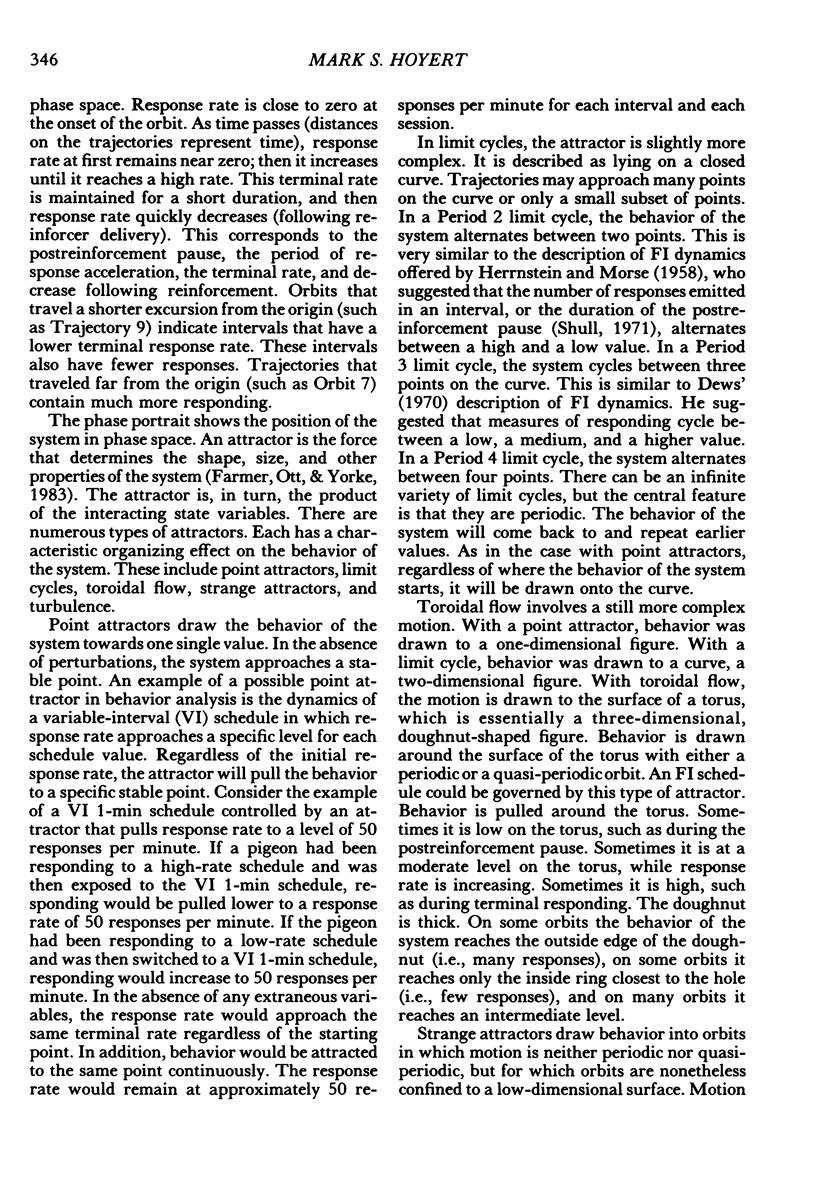
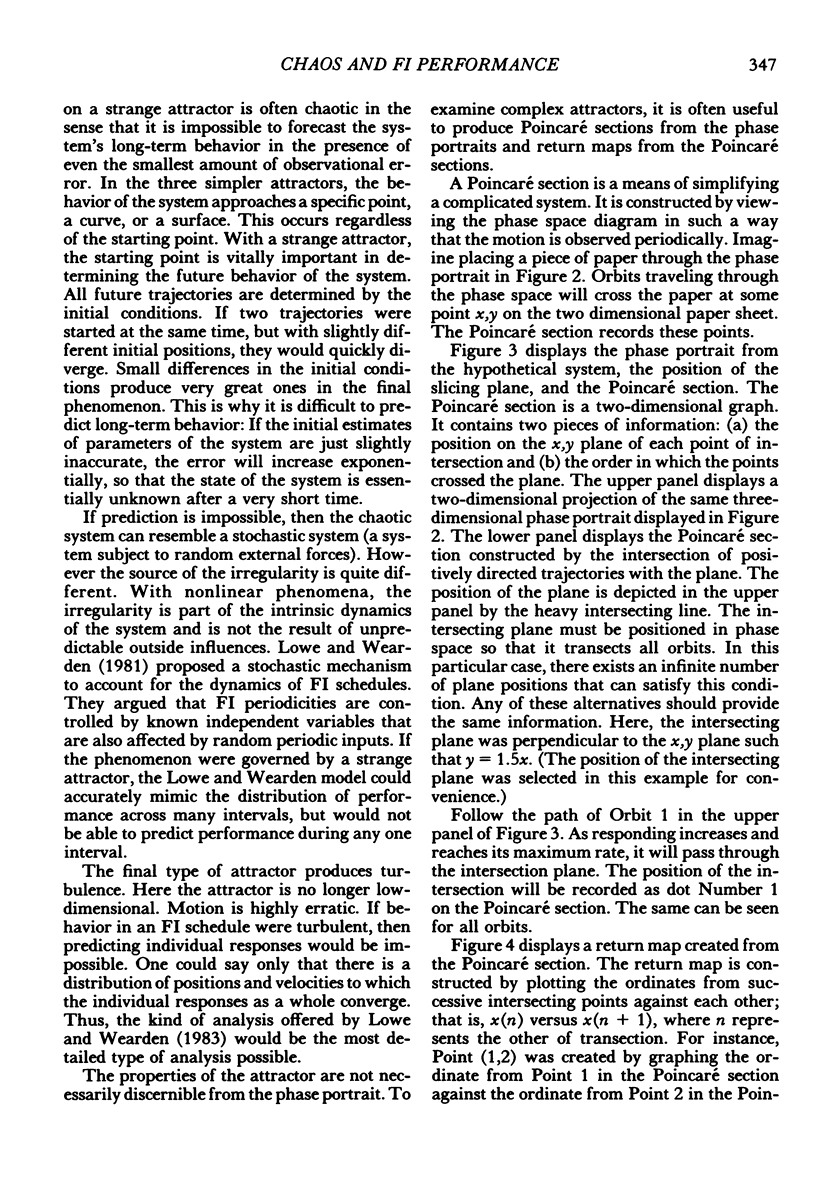
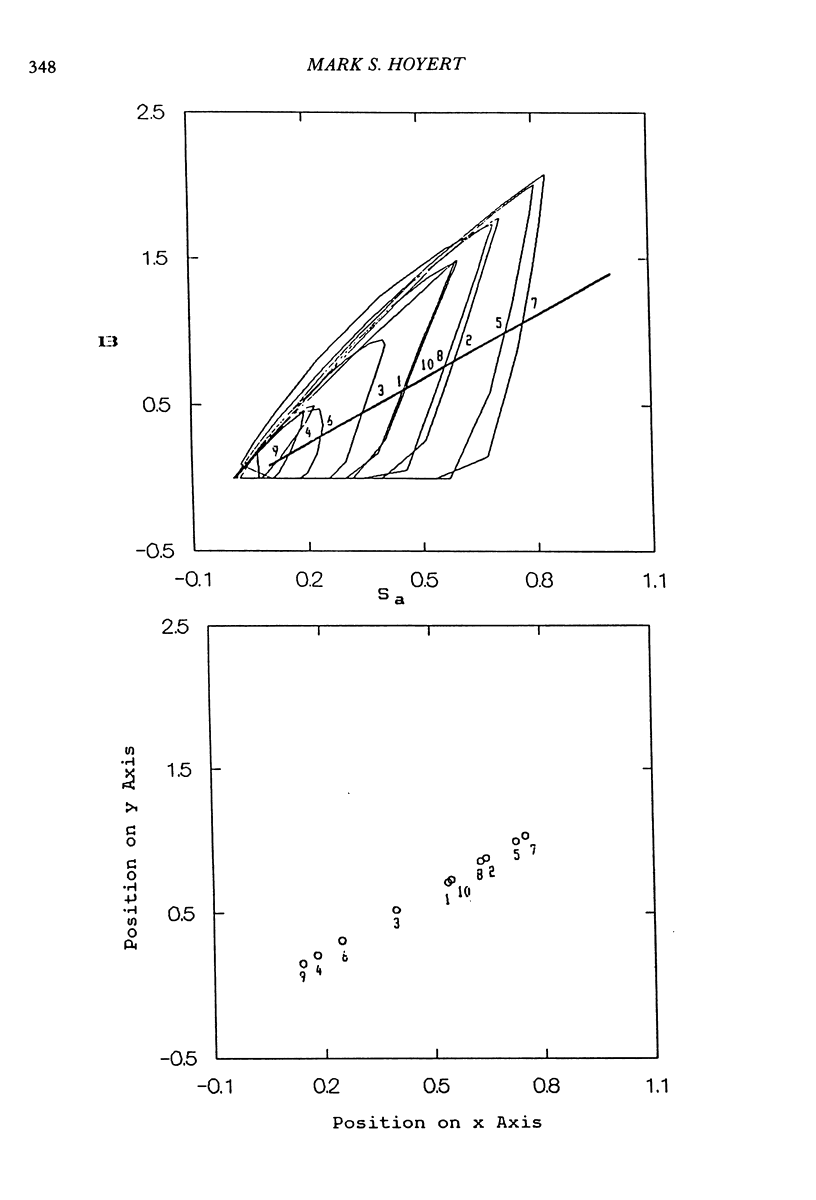
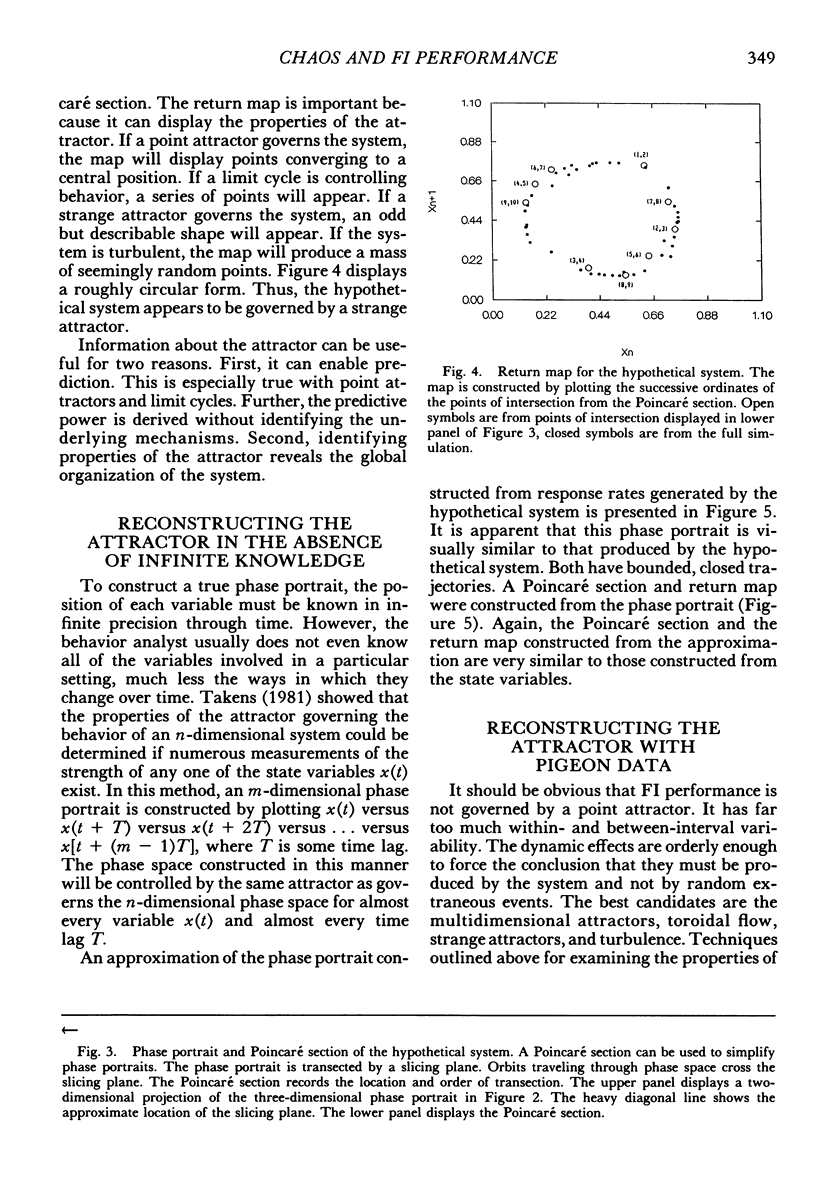
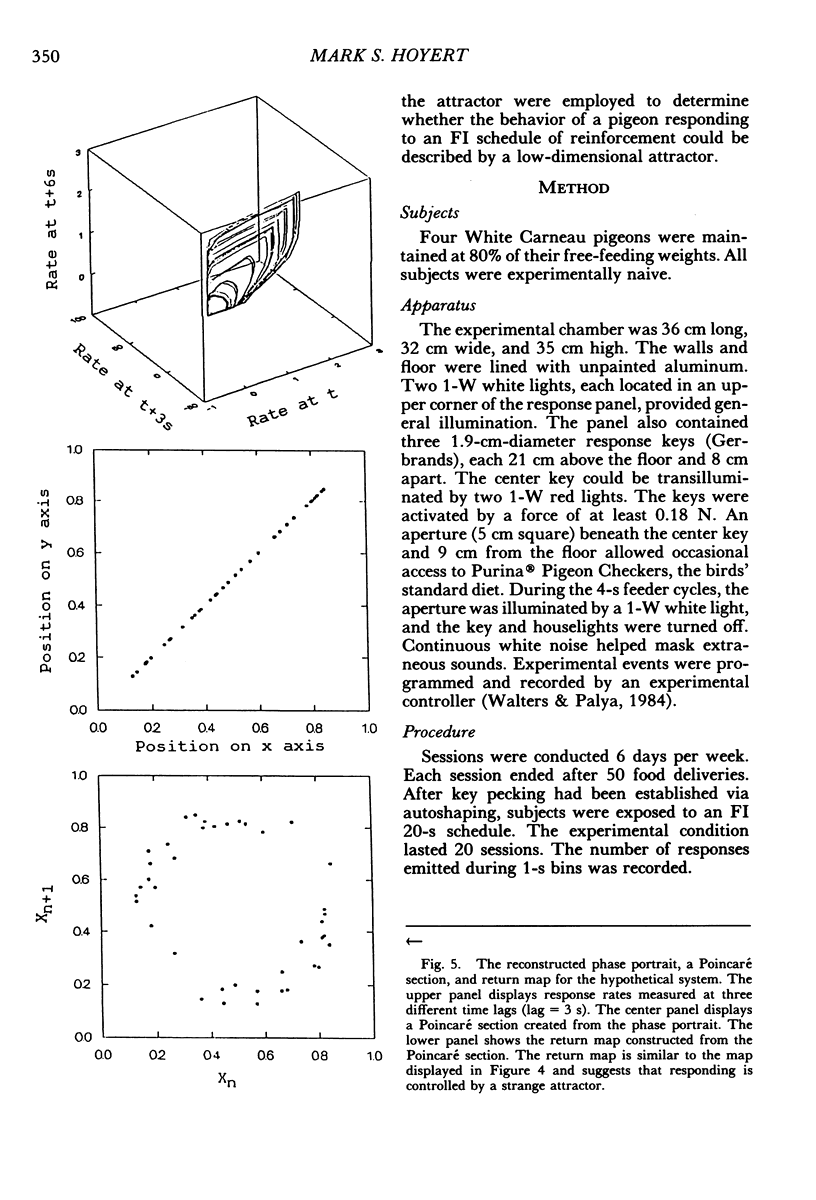
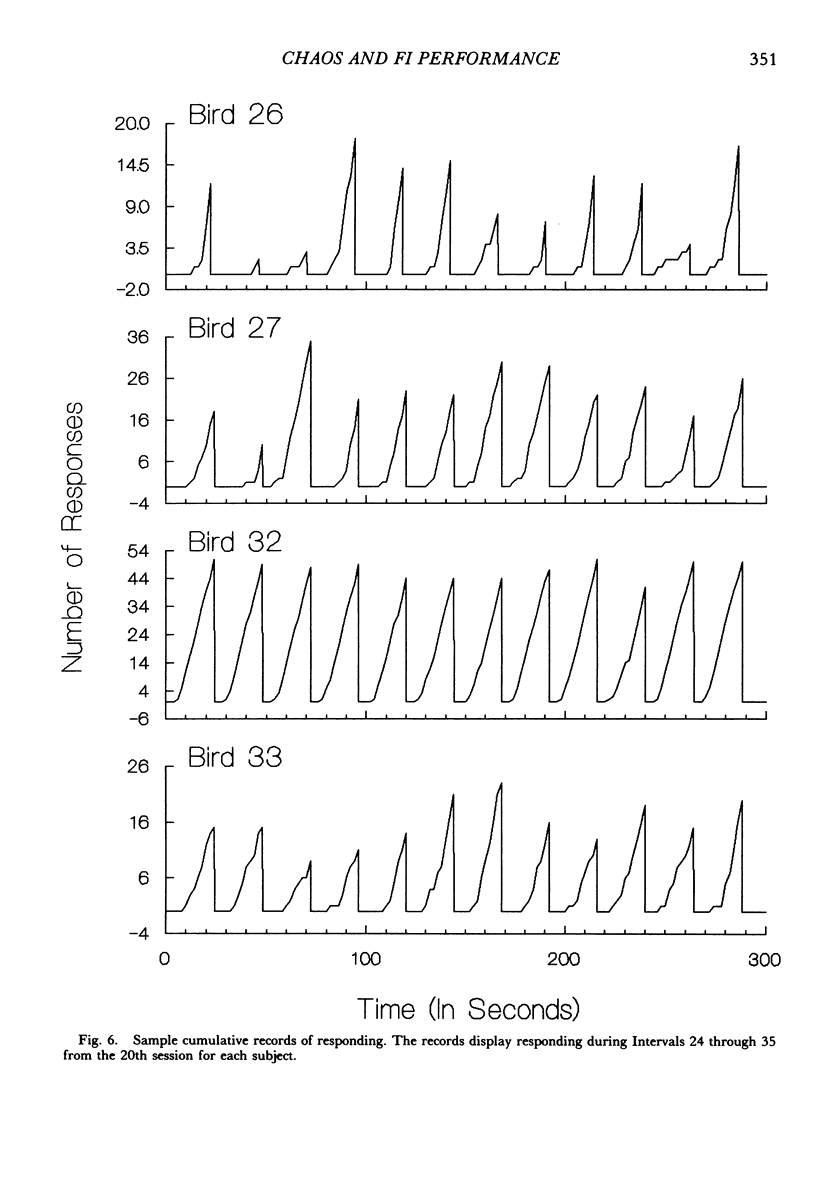
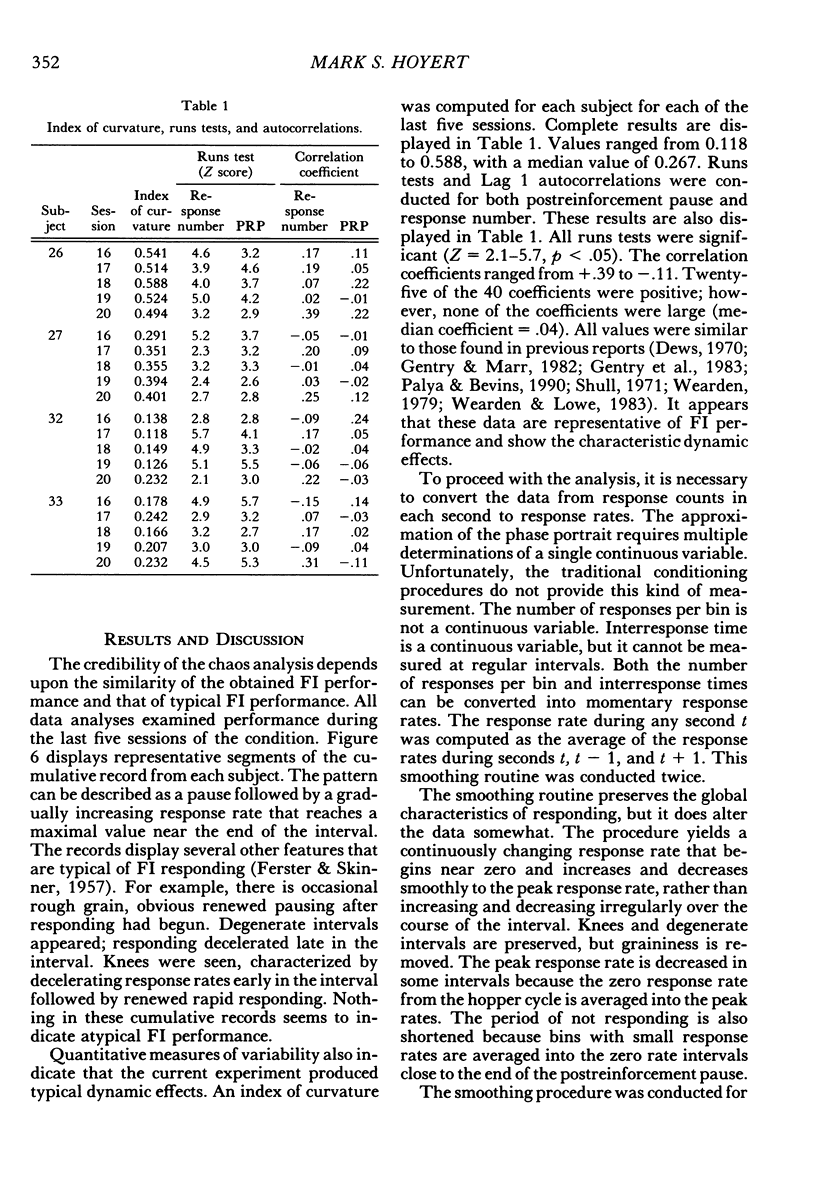
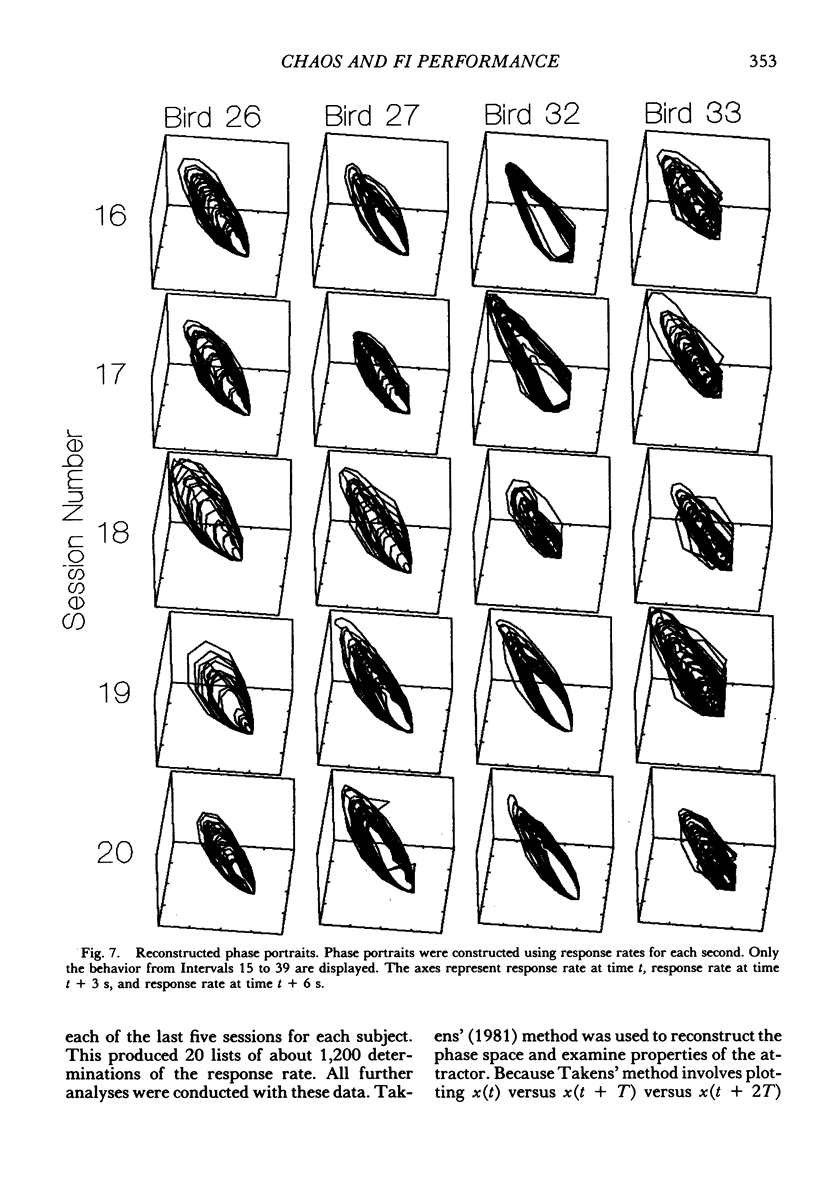
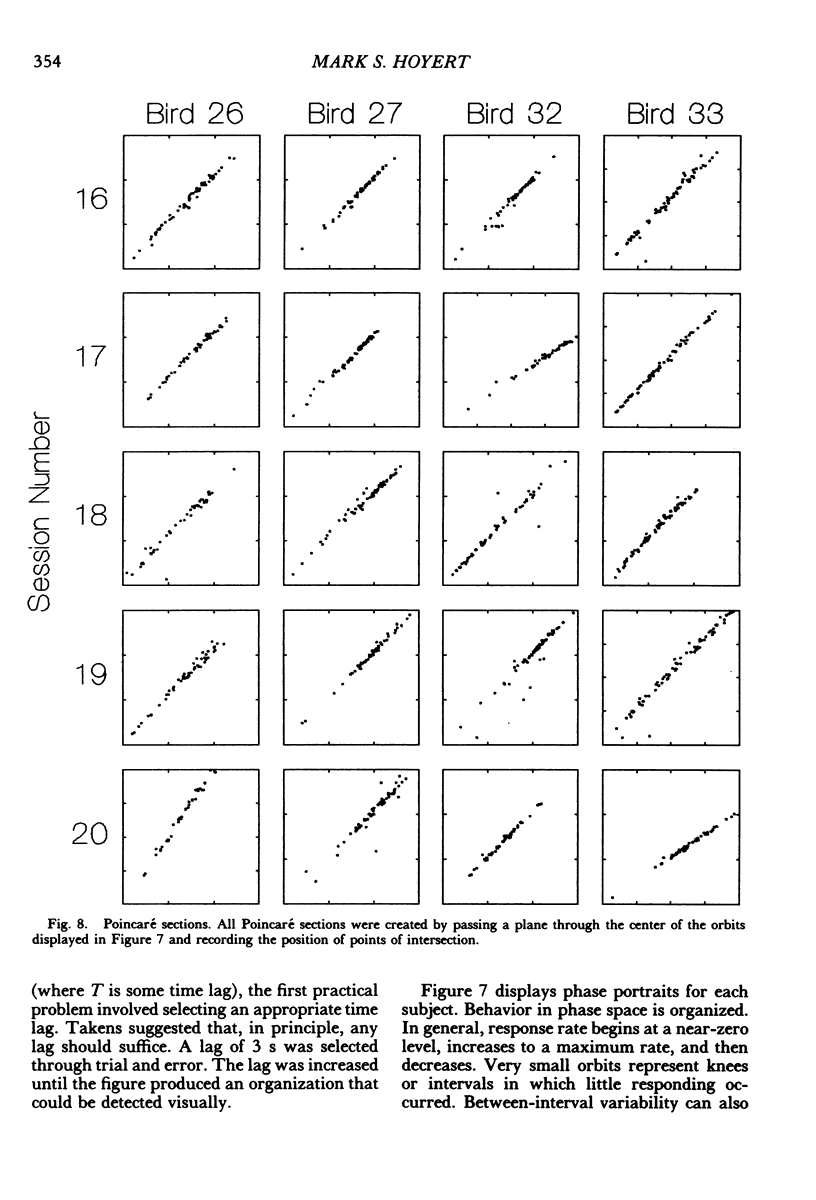
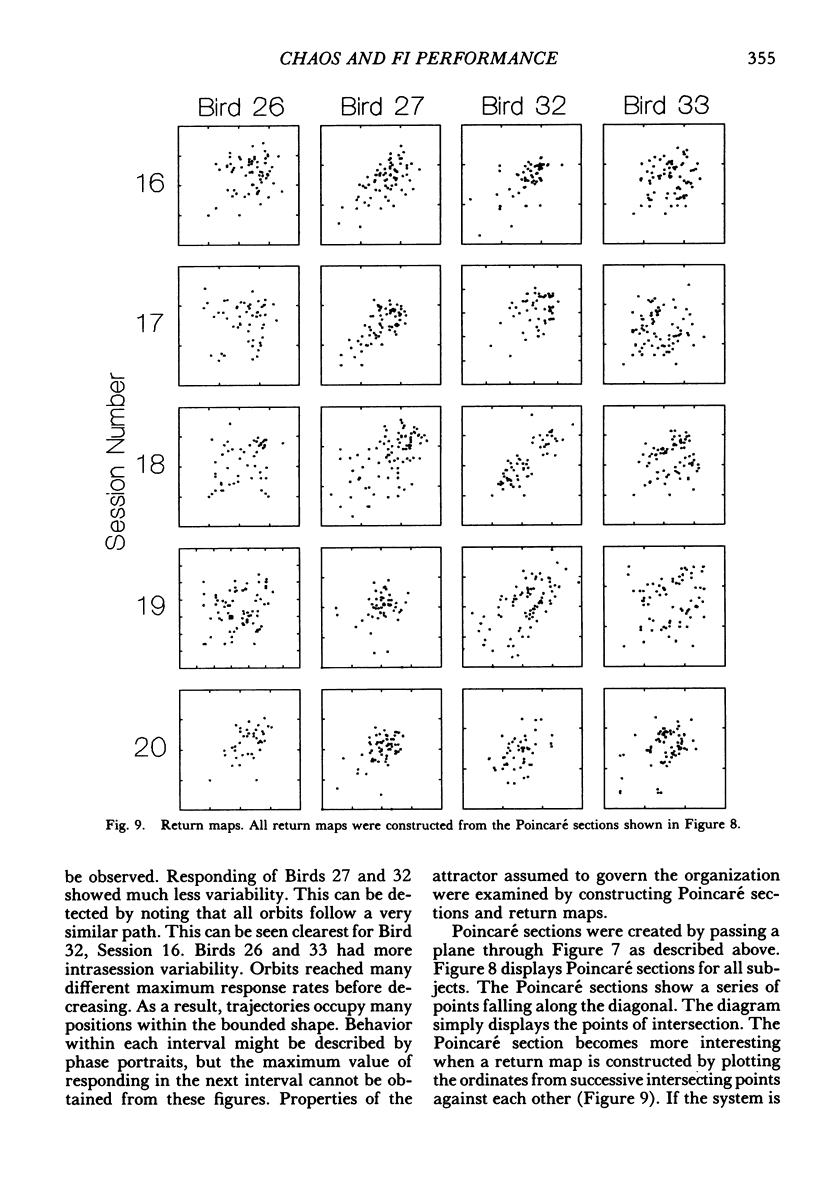
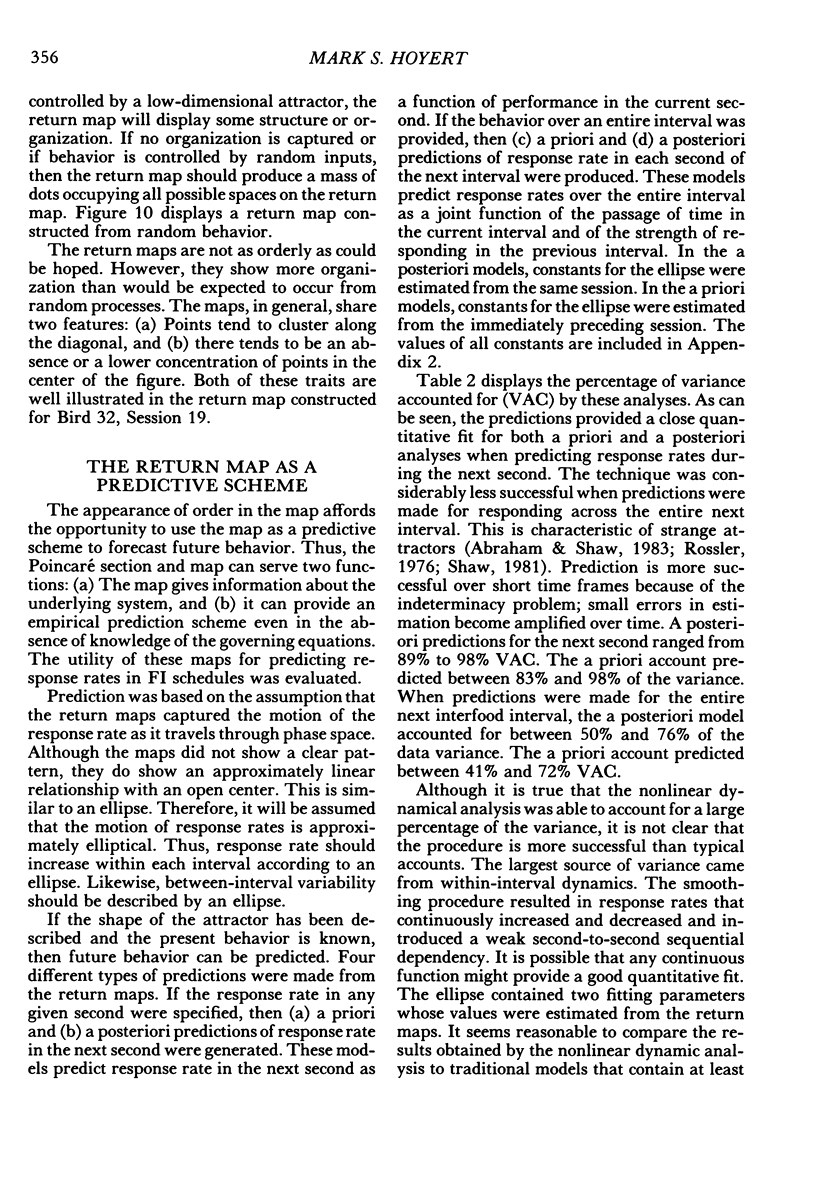
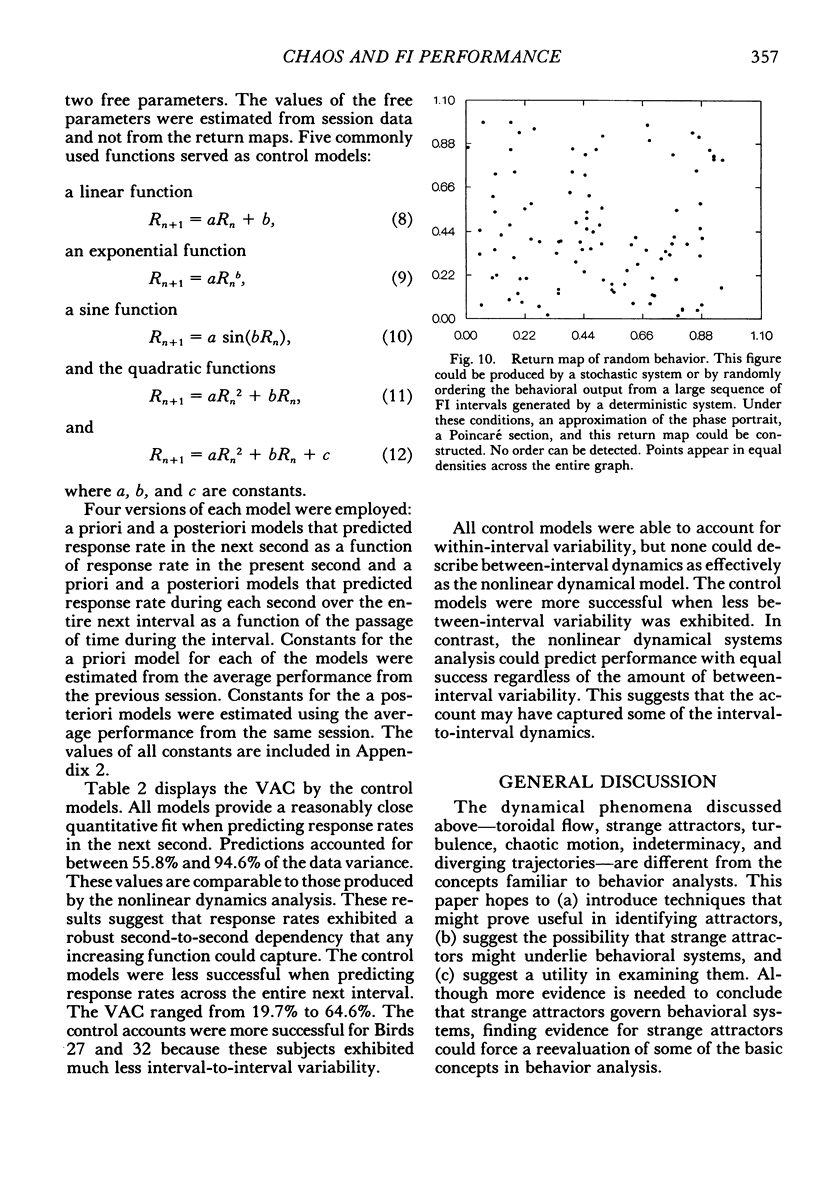
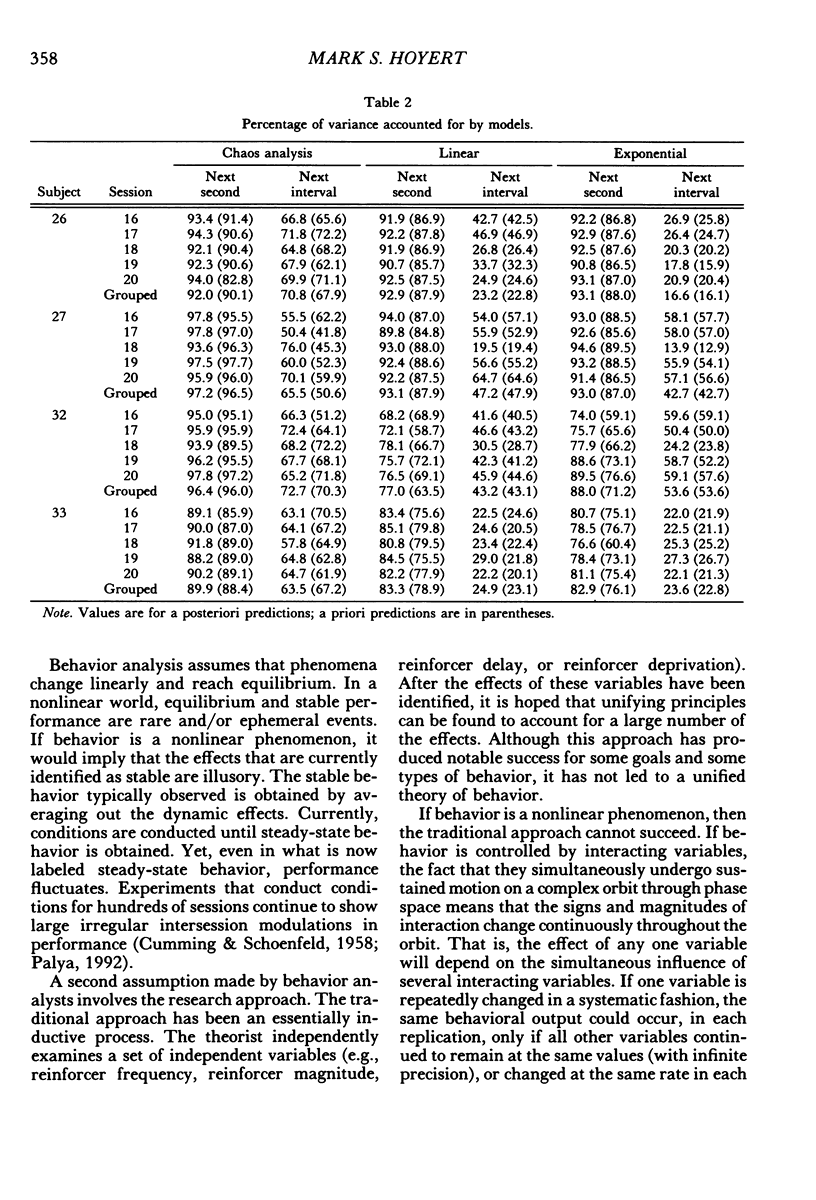
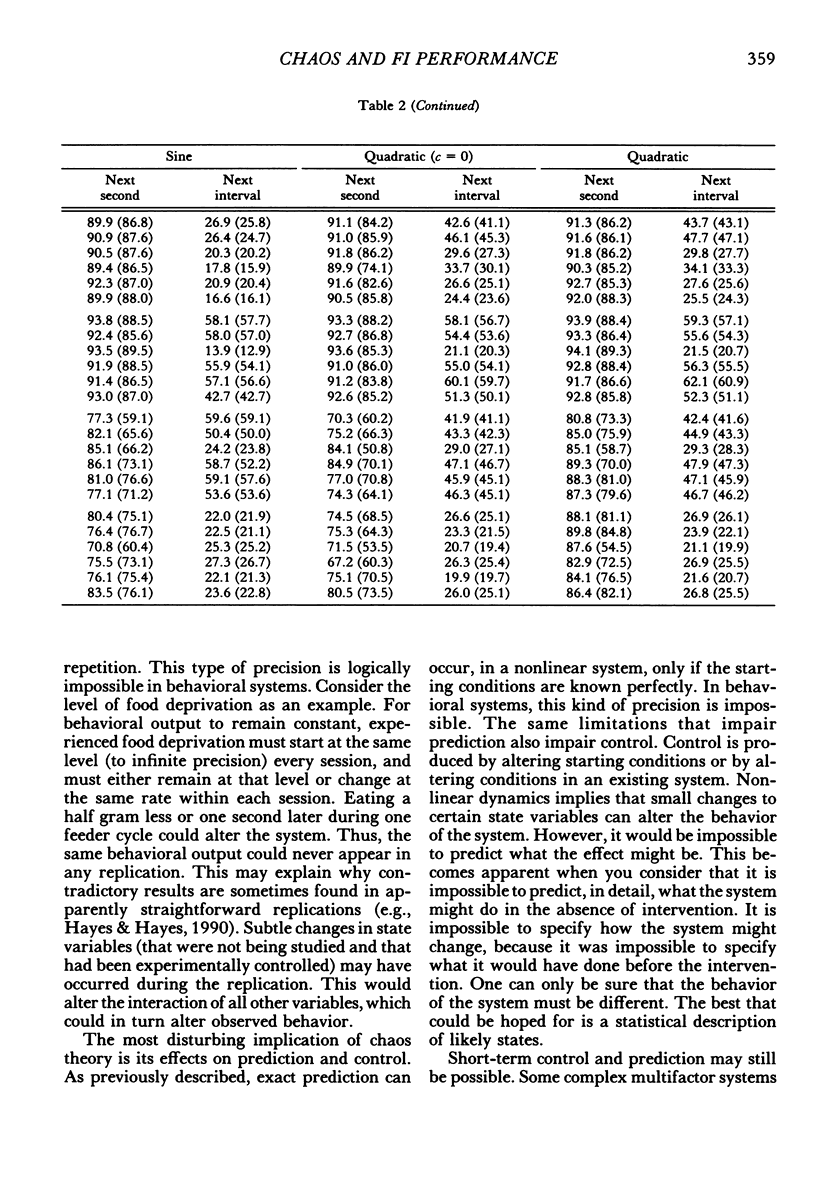
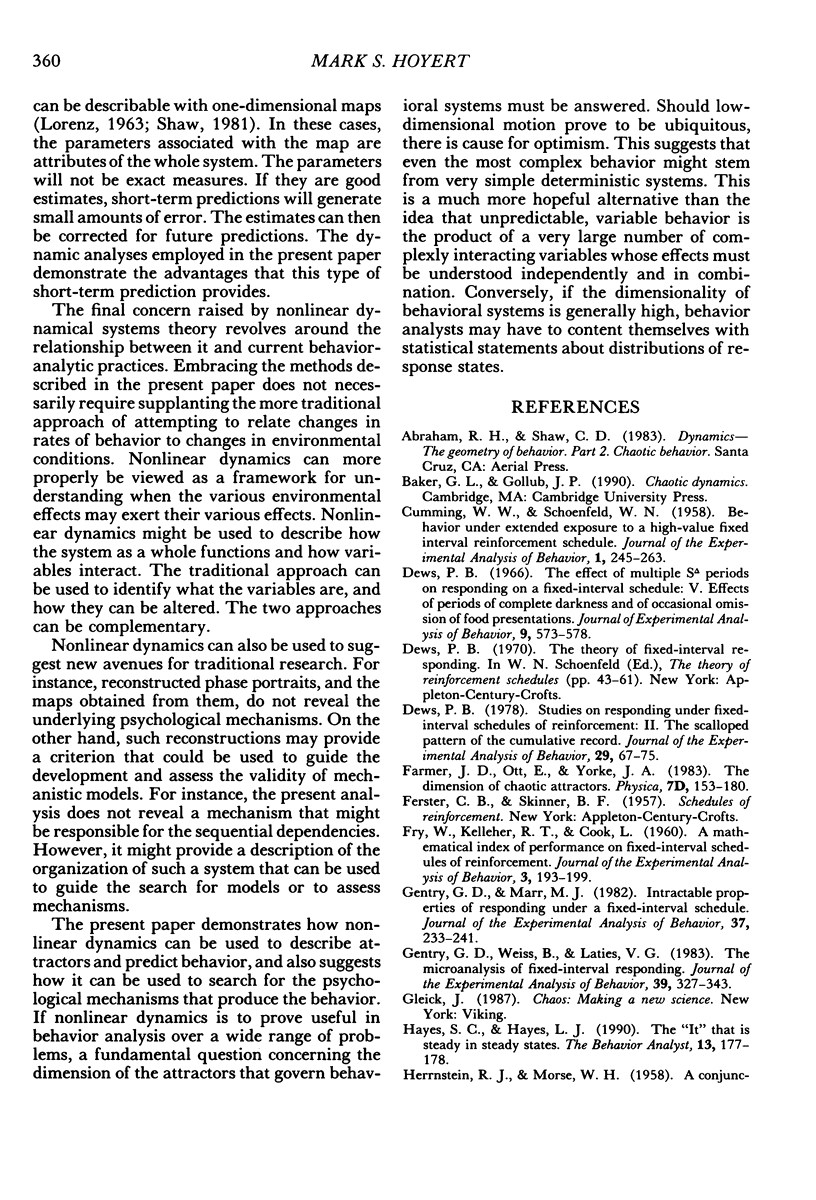
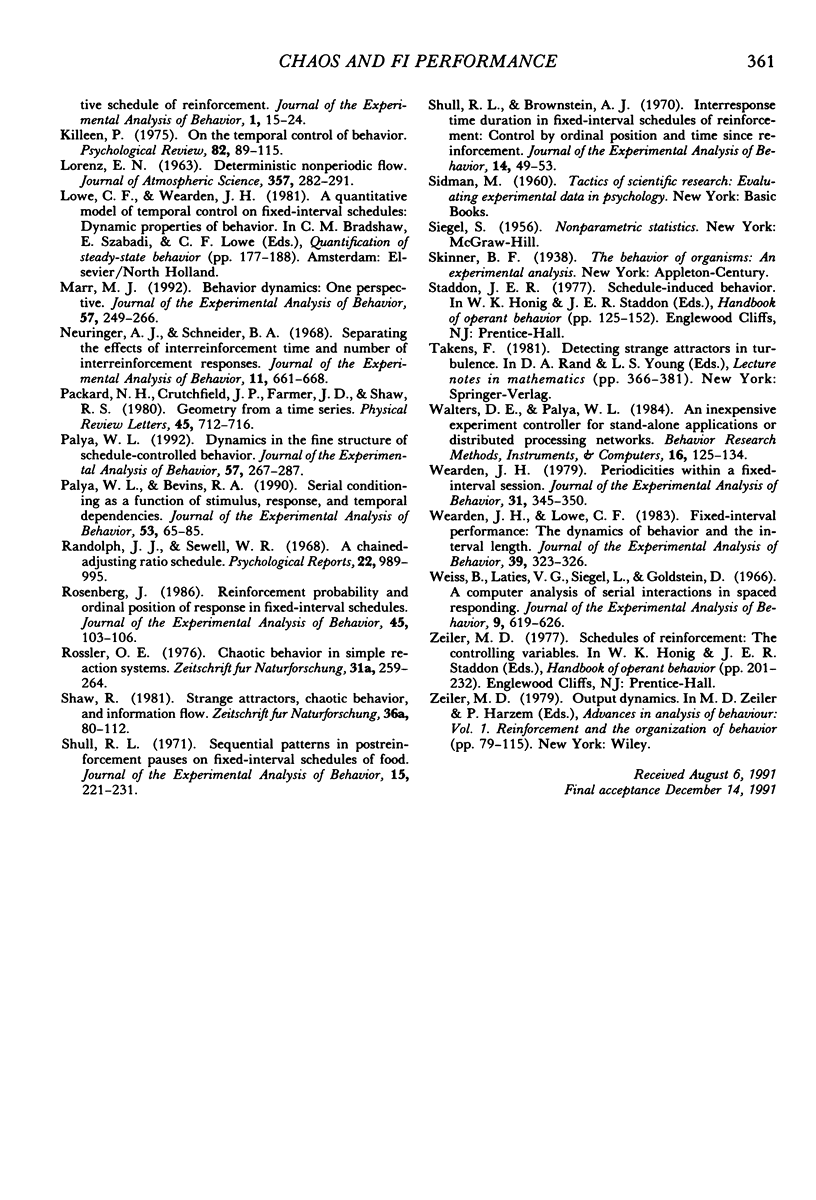
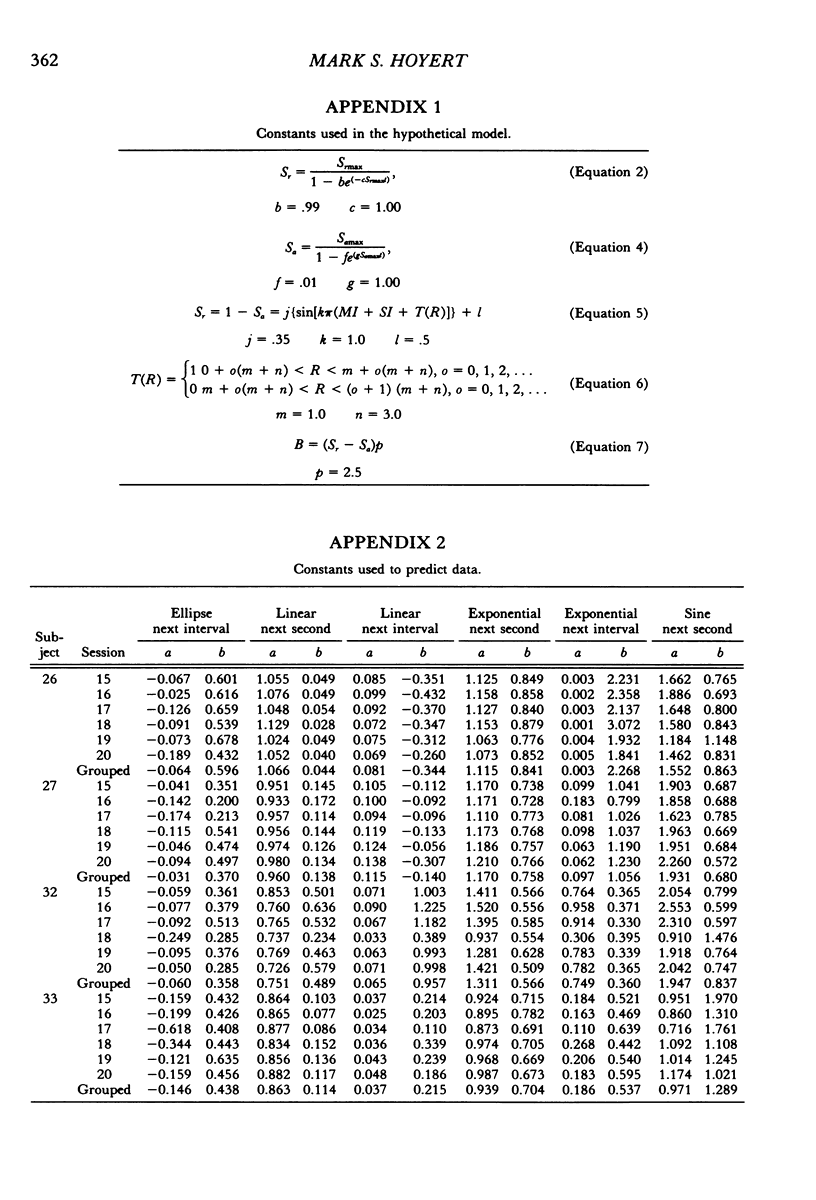

Selected References
These references are in PubMed. This may not be the complete list of references from this article.
- Cumming W. W., Schoenfeld W. N. Behavior under extended exposure to a high-value fixed interval reinforcement schedule. J Exp Anal Behav. 1958 Aug;1(3):245–263. doi: 10.1901/jeab.1958.1-245. [DOI] [PMC free article] [PubMed] [Google Scholar]
- Dews P. B. Studies on responding under fixed-interval schedules of reinforcement: II. The scalloped pattern of the cumulative record. J Exp Anal Behav. 1978 Jan;29(1):67–75. doi: 10.1901/jeab.1978.29-67. [DOI] [PMC free article] [PubMed] [Google Scholar]
- Dews P. B. The effect of multiple S-delta periods on responding on a fixed-interval schedule. V. Effect of periods of complete darkness and of occasional omissions of food presentations. J Exp Anal Behav. 1966 Sep;9(5):573–578. doi: 10.1901/jeab.1966.9-573. [DOI] [PMC free article] [PubMed] [Google Scholar]
- FRY W., KELLEHER R. T., COOK L. A mathematical index of performance on fixed-interval schedules of reinforcement. J Exp Anal Behav. 1960 Jul;3:193–199. doi: 10.1901/jeab.1960.3-193. [DOI] [PMC free article] [PubMed] [Google Scholar]
- Gentry G. D., Marr M. J. Intractable properties of responding under a fixed-interval schedule. J Exp Anal Behav. 1982 Mar;37(2):233–241. doi: 10.1901/jeab.1982.37-233. [DOI] [PMC free article] [PubMed] [Google Scholar]
- Gentry G. D., Weiss B., Laties V. G. The microanalysis of fixed-interval responding. J Exp Anal Behav. 1983 Mar;39(2):327–343. doi: 10.1901/jeab.1983.39-327. [DOI] [PMC free article] [PubMed] [Google Scholar]
- HERRNSTEIN R. J., MORSE W. H. A conjunctive schedule of reinforcement. J Exp Anal Behav. 1958 Jan;1:15–24. doi: 10.1901/jeab.1958.1-15. [DOI] [PMC free article] [PubMed] [Google Scholar]
- Marr M. J. Behavior dynamics: One perspective. J Exp Anal Behav. 1992 May;57(3):249–266. doi: 10.1901/jeab.1992.57-249. [DOI] [PMC free article] [PubMed] [Google Scholar]
- Neuringer A. J., Schneider B. A. Separating the effects of interreinforcement time and number of interreinforcement responses. J Exp Anal Behav. 1968 Nov;11(6):661–667. doi: 10.1901/jeab.1968.11-661. [DOI] [PMC free article] [PubMed] [Google Scholar]
- Palya W. L., Bevins R. A. Serial conditioning as a function of stimulus, response, and temporal dependencies. J Exp Anal Behav. 1990 Jan;53(1):65–85. doi: 10.1901/jeab.1990.53-65. [DOI] [PMC free article] [PubMed] [Google Scholar]
- Palya W. L. Dynamics in the fine structure of schedule-controlled behavior. J Exp Anal Behav. 1992 May;57(3):267–287. doi: 10.1901/jeab.1992.57-267. [DOI] [PMC free article] [PubMed] [Google Scholar]
- Randolph J. J., Sewell W. R. A chained adjusting ratio schedule. Psychol Rep. 1968 Jun;22(3):989–995. doi: 10.2466/pr0.1968.22.3.989. [DOI] [PubMed] [Google Scholar]
- Rosenberg J. Reinforcement probability and ordinal position of response in fixed-interval schedules. J Exp Anal Behav. 1986 Jan;45(1):103–106. doi: 10.1901/jeab.1986.45-103. [DOI] [PMC free article] [PubMed] [Google Scholar]
- Shull R. L., Brownstein A. J. Interresponse time duration in fixed-interval schedules of reinforcement: control by ordinal position and time since reinforcement. J Exp Anal Behav. 1970 Jul;14(1):49–53. doi: 10.1901/jeab.1970.14-49. [DOI] [PMC free article] [PubMed] [Google Scholar]
- Shull R. L. Sequential patterns in post-reinforcement pauses on fixed-interval schedules of food. J Exp Anal Behav. 1971 Mar;15(2):221–231. doi: 10.1901/jeab.1971.15-221. [DOI] [PMC free article] [PubMed] [Google Scholar]
- Wearden J. H., Lowe C. F. Fixed-interval performance: The dynamics of behavior and the interval length. J Exp Anal Behav. 1983 Mar;39(2):323–326. doi: 10.1901/jeab.1983.39-323. [DOI] [PMC free article] [PubMed] [Google Scholar]
- Wearden J. H. Periodicities within a fixed-interval session. J Exp Anal Behav. 1979 May;31(3):345–350. doi: 10.1901/jeab.1979.31-345. [DOI] [PMC free article] [PubMed] [Google Scholar]
- Weiss B., Laties V. G., Siegel L., Goldstein D. A computer analysis of serial interactions in spaced responding. J Exp Anal Behav. 1966 Nov;9(6):619–626. doi: 10.1901/jeab.1966.9-619. [DOI] [PMC free article] [PubMed] [Google Scholar]


